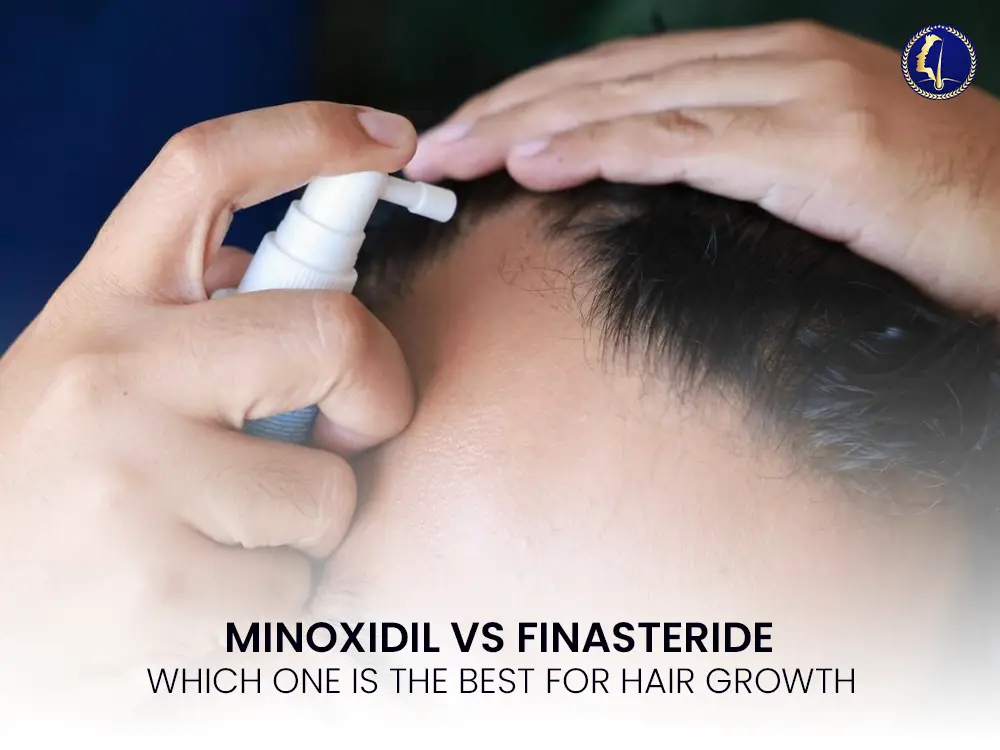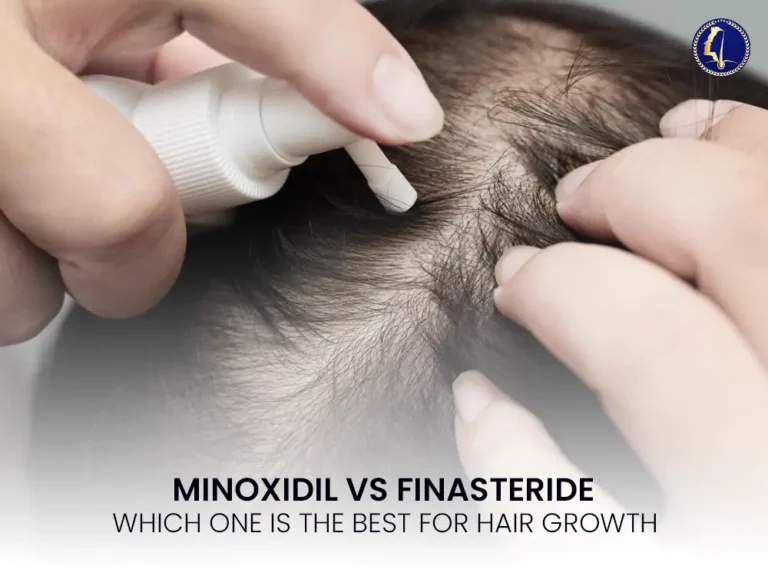Minoxidil vs. Finasteride
Minoxidil Vs Finasteride – Hair loss is a common concern for both men and women, and two of the most popular treatments are Minoxidil and Finasteride. But which one is more effective? In this detailed comparison, we will explore their mechanisms, effectiveness, side effects, and costs to determine the best option for hair growth.
What is Minoxidil?

Minoxidil is a topical treatment designed to stimulate hair growth. It is available in 2% and 5% concentrations, either in liquid or foam forms. Minoxidil was originally developed as a medication for high blood pressure, but researchers discovered its ability to promote hair regrowth.
How Does Minoxidil Work?
Increases blood circulation to the hair follicles
Prolongs the anagen (growth) phase of the hair cycle
Revitalizes weakened hair follicles to produce thicker hair
Minoxidil is approved for both men and women and is commonly used to treat male and female pattern baldness.
What is Finasteride?
Finasteride is an oral medication that works by blocking Dihydrotestosterone (DHT), the hormone responsible for hair loss in men. It is usually available in 1mg and 5mg tablets, with the lower dose prescribed for hair loss treatment.
How Does Finasteride Work?
Inhibits the 5-alpha reductase enzyme, reducing DHT levels
Slows down hair follicle shrinkage
Promotes hair regrowth by preventing further miniaturization
Unlike Minoxidil, Finasteride is only approved for men and is not recommended for women due to potential hormonal effects.
Minoxidil vs. Finasteride: Key Differences
| Feature | Minoxidil | Finasteride |
|---|---|---|
| Form | Topical solution/foam | Oral tablet |
| Mechanism | Stimulates hair follicles | Blocks DHT to prevent hair loss |
| Who Can Use It? | Men & Women | Men only |
| Effectiveness | Works best on crown/thinning areas | Prevents hair loss & regrows hair |
| Side Effects | Scalp irritation, shedding | Decreased libido, erectile dysfunction |
| Duration to See Results | 3-6 months | 4-6 months |
| Continuous Use? | Yes, stopping may cause hair loss | Yes, stopping may cause hair loss |
Effectiveness: Which One Works Better?
Minoxidil Effectiveness
Minoxidil is particularly effective for early-stage hair thinning. Studies have shown that about 40-50% of users experience visible hair regrowth within 3 to 6 months. However, results may vary based on the severity of hair loss and consistency of use.
Finasteride Effectiveness
Finasteride is more effective in preventing hair loss, particularly in the crown and mid-scalp region. Research indicates that around 80-90% of men experience a reduction in hair loss with continued use over 6-12 months.
Verdict: If your goal is to prevent further hair loss, Finasteride is more effective. If you are looking to stimulate new hair growth, Minoxidil is the better option.
Side Effects of Minoxidil vs. Finasteride
Minoxidil Side Effects
Scalp irritation, redness, or dryness
Temporary shedding phase during the first few weeks
Unwanted hair growth on the face or body (if applied incorrectly)
Finasteride Side Effects
Decreased libido and erectile dysfunction in about 1-2% of users
Mood changes, depression, or anxiety (rare cases)
Potential risk to pregnant women (women should avoid handling crushed tablets)
Verdict: Minoxidil has milder side effects but requires consistent application. Finasteride is more convenient (once-a-day pill) but carries hormonal side effects.
Cost Comparison: Minoxidil vs. Finasteride in Malaysia
| Treatment | Price (MYR) per month |
| Minoxidil 5% | RM 70 – RM 180 |
| Finasteride 1mg | RM 90 – RM 250 |
Verdict: Minoxidil is slightly more affordable, but long-term costs depend on individual needs and clinic consultations.
Can You Use Minoxidil and Finasteride Together?
Yes! Combining Minoxidil and Finasteride can provide optimal results, as they work through different mechanisms:
Minoxidil stimulates hair growth
Finasteride prevents further hair loss
Many dermatologists recommend using both treatments together for maximum effectiveness.
Frequently Asked Questions (FAQs)
1. Can women use Finasteride?
No, Finasteride is not approved for women due to its hormonal effects, especially during pregnancy.
2. How long should I use Minoxidil or Finasteride?
Both treatments require long-term use. Stopping them may result in hair loss resuming.
3. Can I buy Minoxidil or Finasteride without a prescription?
Minoxidil is available over-the-counter.
Finasteride requires a doctor’s prescription in most countries, including Malaysia.
4. Is Finasteride safe for long-term use?
Yes, studies suggest that long-term use is safe, but some users may experience persistent side effects.
5. Does Minoxidil work on a receding hairline?
Minoxidil is less effective on a receding hairline but works better on the crown and mid-scalp.
6. Can you use minoxidil after done hair transplant surgery?
Yes! most hair transplant clinic use minoxidil and finasteride to maintain the hair growth!
Final Verdict: Which One Should You Choose?
| Goal | Best Option |
| Preventing Hair Loss | Finasteride |
| Regrowing Hair | Minoxidil |
| Fast Results | Finasteride |
| Fewer Side Effects | Minoxidil |
| Combining for Best Results | Minoxidil + Finasteride |
For those suffering from mild hair thinning, Minoxidil alone may be sufficient. However, for those experiencing significant hair loss, a combination of Minoxidil and Finasteride is the most effective approach.
#HairLoss #Minoxidil #Finasteride #HairRegrowth #AlopeciaTreatment
